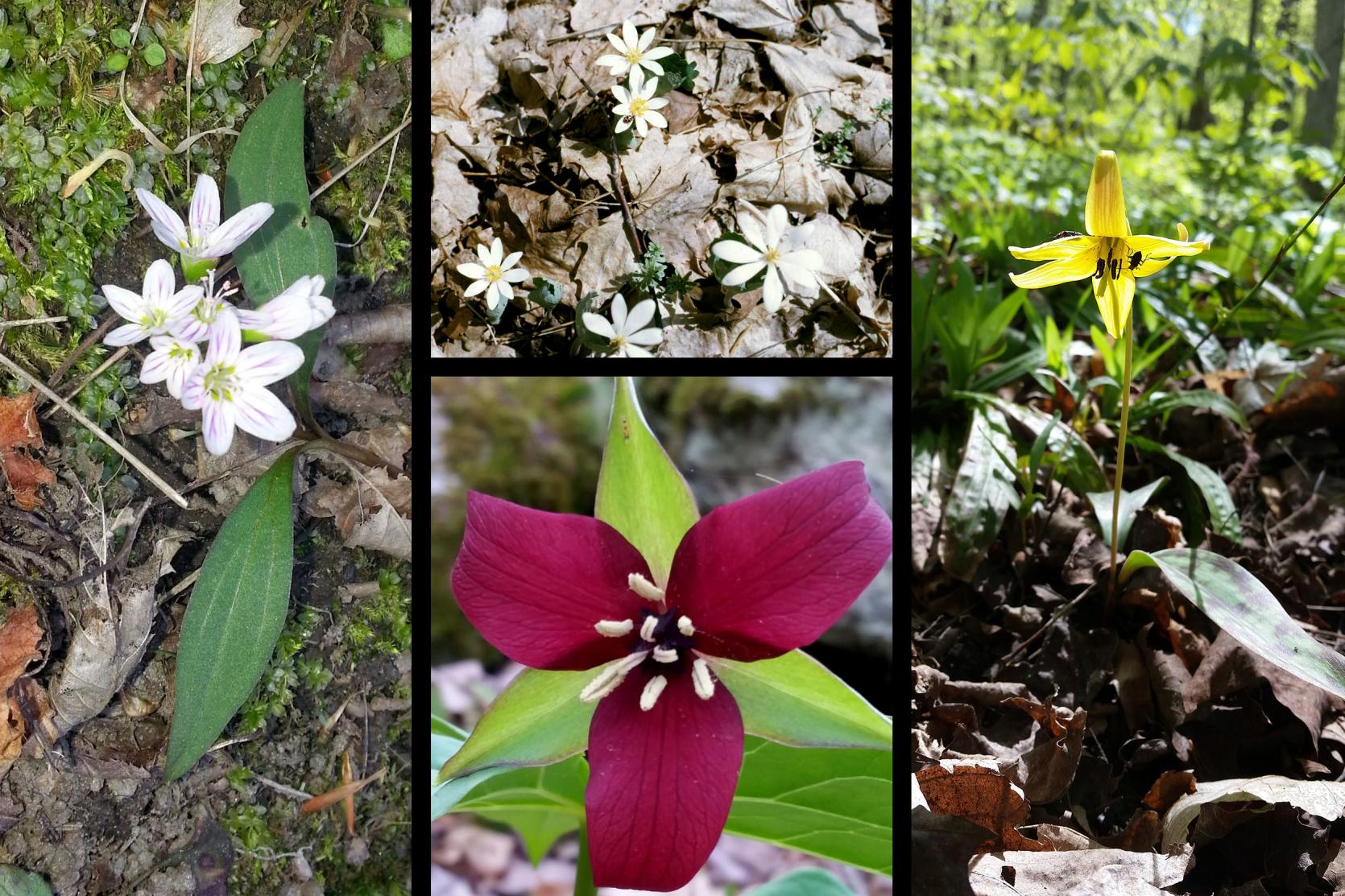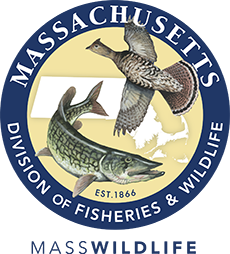- Division of Fisheries and Wildlife
Media Contact
Media Contact, MassWildlife

Early flowering plants that produce leaves, bloom, and set seed quickly after the snow melts in the spring are referred to as spring ephemerals. Many people look forward to the appearance of these appealing wildflowers with great excitement as they represent the seasons changing. Spring ephemeral flowers also provide the much-needed first nectar and pollen of the season for over-wintering pollinators, including bumblebee queens, mining bees, halictid or sweat bees, early butterflies, beetles, flies, and gnats. In return, these insects transfer pollen from one plant to another.
Spring ephemerals are found in deciduous forests dominated by sugar maple, ash, black cherry, and hop hornbeam trees. Before the trees have their leaves, these wildflowers show up early to take advantage of the unobscured access to sunlight. While the trees are still dormant, spring ephemerals are in a race against time. They take advantage of the above-average nutrient levels in the soil (from decomposing fall leaves) to photosynthesize quickly. This provides the energy they need for flowering, setting seed, and storing carbohydrates for the following year all before the tree canopy blocks sunlight from the forest floor.
The forest trees pull large amounts of water out of the soil when they start to grow leaves. The amount of water being absorbed by the trees is so great that it causes groundwater levels to drop. Before this happens, spring ephemerals use the higher moisture levels in the soil to carry out their life cycle. The dampness also helps them tolerate low temperatures they often face in early spring.
Spring ephemerals are only out for a short time so go out and enjoy these early spring bloomers! You can download a copy of a spring ephemeral field guide* to help you identify and learn about early wildflowers found in Massachusetts. While these delights of spring can be found across much of the state, there are specific locations where a plentiful variety of species can be found.
- Western: Greylock Glen in Adams, Green River Wildlife Management Area in Colrain.
- Near Boston: Blue Hills Reservation, Middlesex Fells
- Northeast: Mass Audubon’s Ipswich River Wildlife Sanctuary
- Central: Wells State Park
Please keep in mind that the survival of a plant population depends on each plant’s ability to produce seed for the following year. If you find a location with these beautiful plants, enjoy them in place and do not pick them. Other people who follow in your path will appreciate what you have admired and left untouched, as will the many native pollinator insects that depend on spring ephemerals for their survival.
*The spring ephemerals field guide appeared in the most recent issue of Massachusetts Wildlife magazine. To order a printed copy, please call MassWildlife at 508-389-6300 to purchase a copy ($3).
